Howdy, ya’ll,
Personal note here to say thanks to everyone who reads and subscribes to Texas to the World. This is my third anniversary of writing on this platform and the interest and feedback have been wonderful as I tried to build a readership. About a fifth of the readership has flattered me with paid subscriptions, for which I am deeply grateful. It is quite a thing when people subscribe to your writing because they want to read it regularly and have confidence it will be worth their time. It is another level of honor when they think your ideas and stories and prose are worth paying for. I just wanted to say thank you on this third anniversary.
As is the case with any writer, I’d like to reach a wider audience. I’ve had trouble taking this to a larger group of readers. Not sure why. There are a lot of Substacks in the digital universe now, and it’s hard to capture attention. Perhaps, it is because the work does not fit in a specific slot. My interests are politics and history and travel and geography and literature and Texas, and I write about all of those topics, including my own adventures. My title, “Texas to the World,” might be a case of bad branding. Not much doubt about the negatives associated with this state at the moment, and not everyone is interested in Texas.
Anyway, I’m open to any ideas you might have to spread the word, and if the name ought to be changed, or other moves I might make to expand paid and free readership. Please share at will and subscribe, if you haven’t. In the meantime, below are two non-political pieces that I hope you will enjoy. - JM
"One person can make a difference, and everyone should try." - John F. Kennedy
We were flying due north out of Omaha. The old DC-3 had shuddered with effort on takeoff and rose so slowly we thought the treetops would remain just beneath our wingtips for the entire trip. Level much later at around 10,000 feet, the props spun with efficiency and the checker-boarded plains below slipped away to our rear with a mystifying slowness. Small towns speckled the prairie and twinkled at dusk. Long trains ran toward the orange light of the evening west.
After we crossed over the Canadian border and turned northeastward, the roads beneath us narrowed and the earth showed less illumination. Late sun on the flat land revealed the dark pines shrinking in height. Eventually, there were almost none emerging from the tundra because it was too cold and short of a summer to sustain their growth.
The PR man was happy, though. Reporters had cocktails and everyone was friendly in the back of the cabin. There was a false sense of adventure. The power company had arranged the flight to upper Manitoba, Canada, at the western shores of Hudson Bay. A great trading company had once sent animal pelts from these remote reaches to global capitals. There were now moose and bear and the rivers that were still wild and scenic but crossed by snow machines and a few people.
“There’s already a dam down there,” the PR man said. “It’s generating a lot of electricity. Not all of it gets used. Why don’t we use it?”
“Maybe it’s just not needed,” I said.
“Of course, it is. We are growing. America is always growing. And we can’t do that without affordable energy.”
He was the only one on the flight wearing a tie. His confidence was not convincing and the trip was growing long. There seemed no lights below to give us any indication of where the outdated passenger plane might alight on the ground. The sky and the world seemed of one eternal piece out the window as the day faded.
The dam we saw the next day was a massive white obelisk that had been laid on its side. A mighty river had been contained behind it by concrete and steel. Trapped water was forced through gates and turned absurdly large turbines. Electricity spun out into 161 kilovolt lines across Canada and ran manufacturing plants in the cities and TV sets in luxury cabins up in the Okanagan.
“Canada produces more power than it can use from this one dam,” the PR man told us. “There’s no reason we should not try to get this very affordable energy down into our country. That’s why we are proposing the Mandan power line from here to Omaha.”
I loved the name of the power company’s project. The Mandan were a small tribe that had lived along the Heart and Knife rivers in the Dakotas. They had their own language, a derivative of the Sioux tongue. They were not given to tribal warfare and had little resistance to offer as the white Manifest Destiny blew through their villages. I decided to call my series of reports on the power project, “Man and the Mandan.” I just liked the sound of the words gathered.
We went up in a helicopter the next day and flew out over Hudson Bay and skimmed the river and marveled at its dark swiftness. The PR man sat in the front seat of the chopper and I took the back but he still spoke to me through the headset.
“You can see the potential here,” he said. “This river and this dam will always be generating power, unless the world runs out of water.”
Back up in the sky in the old tail-dragger a few days later I watched the sectioned land and the dark green splotches of crops. The country had been divided by an ordinance in the late 1800s into mile square sections. Railroads were seduced into building transcontinental lines when the government gave them every other square mile section along the route. Land was money. The history of that law was apparent in the farmland laid a plaid and broadly visible from the air.
The Mandan Power Line was engineered to cut across the high plains of the Dakotas and down into Nebraska. The Omaha power company wanted that cheap energy from Manitoba. Inexpensive electricity would be sold into the Mid American Power Pool and be marked up to profit the shareholders of the Omaha supplier. No one believed the consumer was likely to benefit.
I went back north into the Dakotas to talk to landowners. There had been very few towns visible from the airplane but the power line route went near a few farm communities. In Iroquois, when I asked about the Mandan, I was told to talk to Marlin. He was growing wheat in wide fields out in the northern flatness.
“Ain’t nothin’ comin’ between me and that sunset,” Marlin Clendening told me. “I don’t care what the power company says, this isn’t that important. They can find another way to do it.”
A few children moved through his house. Marlin was tall and angular and his limbs were loose and his animation made his perspective more visible to me. His wife stood behind his chair, her hand on his shoulder as he talked, a kind of indoor American gothic image.
“I’ve been a farmer since I was a kid and I’m always going to be a farmer,” he said. “And I don’t need a 161 kilovolt line crossing my property, hanging right there in front of the sun, and maybe even killing my animals.”
There were early studies in the eighties that indicated increasing stillborns during calving season if the mothers grazed beneath power lines. No one understood electrical smog but we were encouraged to take a fluorescent bulb and stand beneath a 161 KV line and watch the emanations cause the light to activate. We did. And it made good video.
“Tell me why their power line is so important,” Marlin said. “Do you really think they are worried about being able to manage growth? Of course not. This is just about making money selling cheap power. Well, they aren’t taking away my prairie and my sunset. We are gonna fight.”
Clendenning organized farmers and environmentalists. They went to hearings, wrote letters, called members of congress, cajoled local elected officials, and confronted the Omaha power company. The sunset was in jeopardy.
The power line was never built. Clendening’s singular resistance was too much for the multi-billion dollar project. The cost was never justified. Instead of giant towers stalking the plains and black lines crossing the precious blue horizon, the sunset remained unimpaired.
My reports on the Mandan got some attention and I was invited to New York City to receive an award from Dartmouth College. The National Media Award for Economic Understanding also involved a nice check for a young journalist. I stayed in the Plaza Hotel and was on the same dais with Dan Rather and Peter Jennings. Job offers followed and opportunity rolled out in front of me.
I expect Marlin Clendening stayed on his farm along that dirt road south of Iroquois. My hope is that he has had a full life and the earth has been good to him and given him abundant crops. Maybe there are grandchildren tugging at his pant legs and he and his wife take them to the back porch at the end of the day after dinner. They look west together where the weakening sun still brightens the wheat that appears alive in the wind. There is no power line crossing his horizon, though, only birds and the invisible things that ride in the breeze.
I hope Marlin Clendenning lives a long, long time. He deserves a lot of sunsets.
Youth Will Be Served
The last time I saw the Pawnee National Grasslands I was driving a beat-up old Ford from Burlington to Greeley, Colorado. I was a radio announcer on my way to do the play-by-play of a high school football game on the Western Plains. The native blue stem and buffalo grasses had lost much of their summer green, but the wind moved across their tops and the sky and road seemed like a single piece of creation, and they gave me memories I still cherish.
I daydreamed about buffalo herds and indigenous peoples moving through those flatlands, but I also noticed the road. It had not changed since I had first traveled this section of the national park system on a motorcycle when I had been tempted by the throttle and the highway. The asphalt was straight and fresh and there was not a single curve on the horizon nor a vehicle on the road.
My bike was hardly up to any dream of unfettered speed. I was riding a Honda 450 and had cleaned the plugs so many times it seemed impossible for them to deliver spark. I was a college student that summer and did not have the money to buy plugs; my first concerns were gas and food and sometimes a paid campground with a shower.
But I had switched out bikes with my buddy and he had been riding a Kawasaki KZ 1000, which was one of the fastest production bikes on the road when they first came into the marketplace. We had stopped to hear the silence, turned off our engines, listened to them tick, and walked away to where there was no sound but the wind moving through the grass tops.
“You wanna try it?” Bobby asked.
“The KZ?”
“I’m offering.”
There is an unspoken rule among motorcyclists, even those with the most modest of machines, that you do not ride the other person’s bike; you especially do not make the request. But an invitation is a different thing.
“Yeah, I’ll give it a go,” I said. “You sure?”
“I figure you’re staring at the white line and wondering about speed.”
I laughed. Friends understood. I tended to move through the world slowly and with observation of detail, but motorcycles were transformative. If I felt safe, I liked to roll up the power and let the bike perform. The KZ would carry me faster than I had ever ridden.
We had come down from Nebraska on Highway 71 and the road had been impossibly straight and true. Rocky buttes rose out of the grass and the late afternoon sun turned them white against the sea of green. Our pace was leisurely and slightly burdened with cheap backpacks with metal frames and heavy cotton sleeping bags increasing our drag coefficient. The sun and clear sky and the churn of the little pistons were comforting and made me feel like I never wanted to get off the bike.
But I have always felt that way.
Bobby and I walked back to the bikes and exchanged keys. We had turned onto Highway 14 and were headed west. The road looked like it might not have a single bend before it reached California.
“It’s faster than its reputation,” Bobby said. “Be careful.”
“Yeah, I will. See ya in Greeley.”
I pulled my helmet with the bubble shield over my head and wondered what my Ma might think when she got the news her son had gone down speeding on a motorcycle not his own out in the middle of America’s big empty. She had taught me to entertain the worst scenarios and I had decided to spend my youth in defiance of fear.
I had never been on a bike with that big of an engine displacement and compared to my little Honda it felt as though I were driving a car. The gears made a solid clunk like what I had heard when riding next to Harleys and I pushed the RPMs upward before shifting. I was at 80 by third gear and the wind was roaring in the ears of my thrift store helmet.
I passed the cutoff for Keota and tore down the asphalt toward Briggsdale, and as the speedometer crossed 100 the only disconcerting feeling was the loudness in my ears.
There was still too much roll left on the throttle and I wanted to see where it might take me. I did not pull it back all at once but eased the RPMs higher and felt the bike easily increase speed.
A bit of buffeting began to change the aerodynamics and I realized Bobby’s backpack had loose flaps that were now being torn to bits in the slipstream of 130 plus miles per hour, but I did not want to stop, and I did not. I took what little turn was left on the throttle and spun it until it would not go further.
I lost my nerve on that long, gleaming straight when the speedo crossed 140 mph and was still climbing. Maybe it was the wind, or I dreamed the ride but when I eased back on the throttle and got back down to 60 mph, I had the sense I could get off the bike and walk next to it as it rolled down the road.
I have never ridden faster since, nor do I expect I ever will. I crossed the Nullarboor in the Australian Outback on a BMW 1200 GSA while staring down the 90-mile straight, which is known as the longest roadbed without a curve in the world. I did not speed. My eyes were out for ‘roos and camels and wombats and sunsets. High-speed riding is not what motorcycling was ever about for me.
But just one time, I wanted to know. I would much rather slow down and think about natives riding the plains or spring winds through the gramma or wildflowers tilting before a summer storm off the Rockies. But I never remove motorcycles from my mind.
They have taken me to those memories and keep me rolling toward new ones.

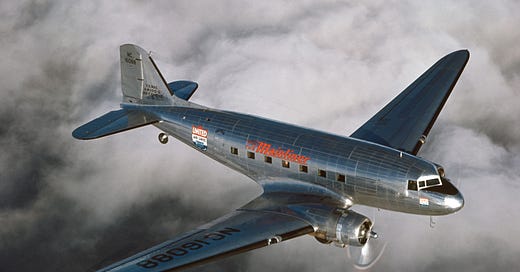




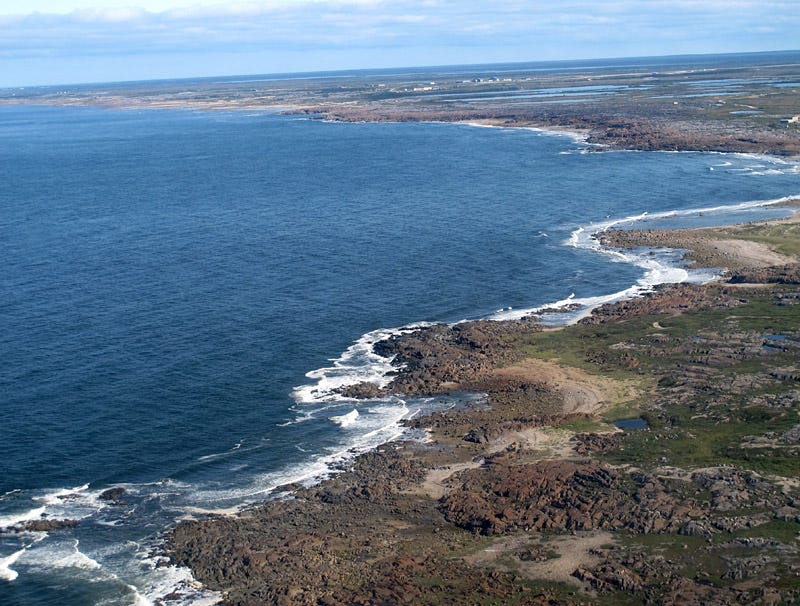
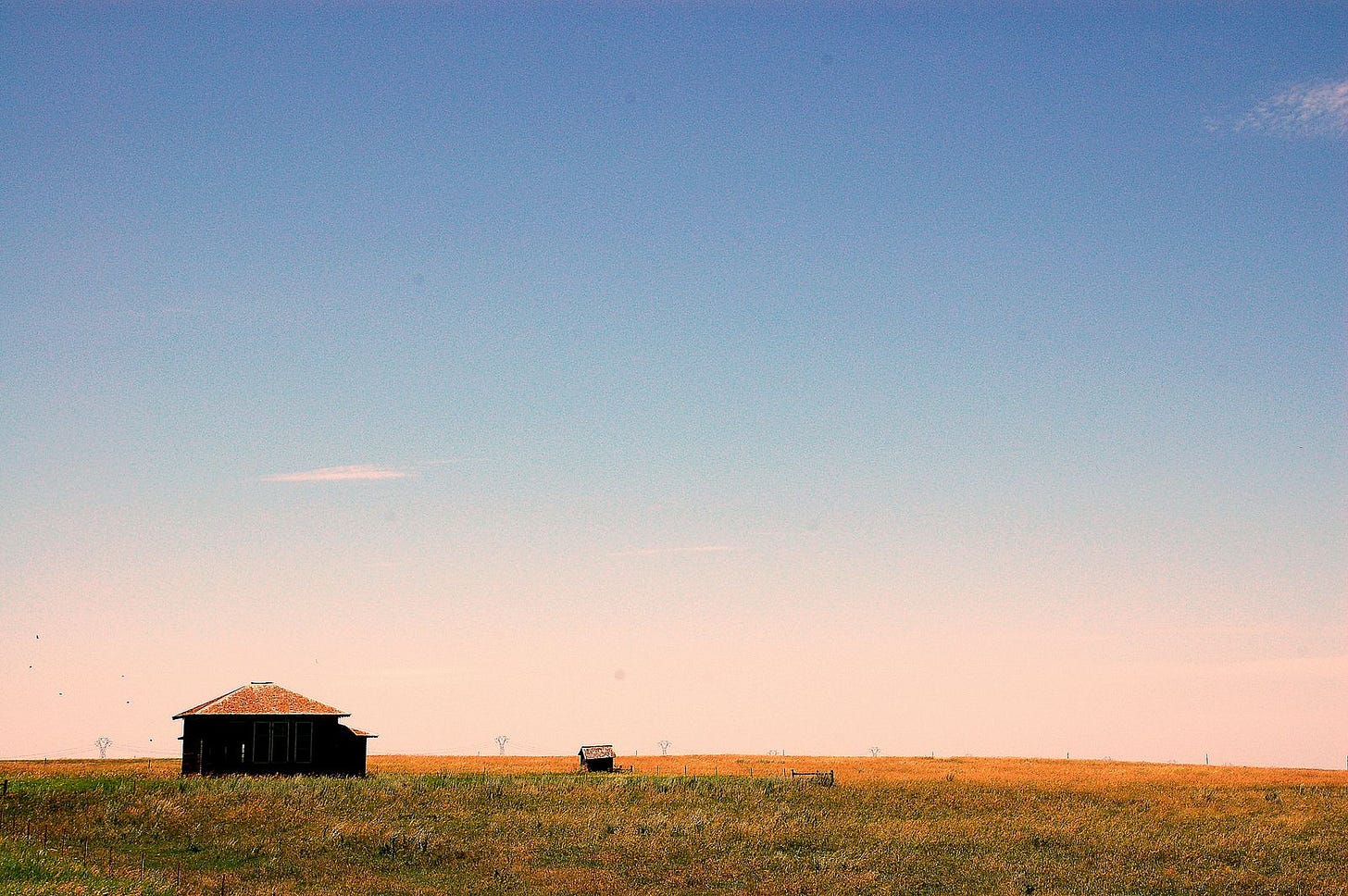
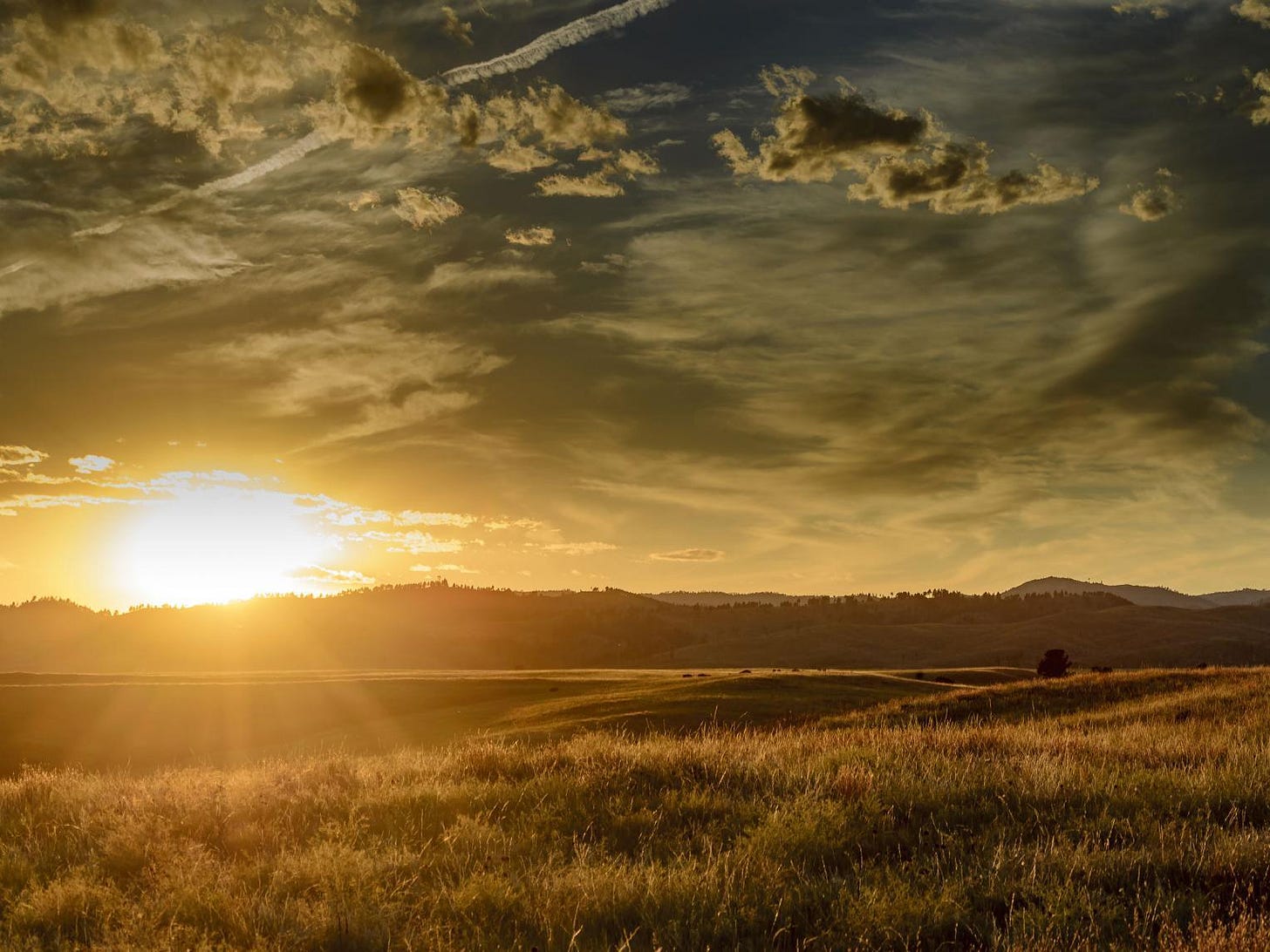



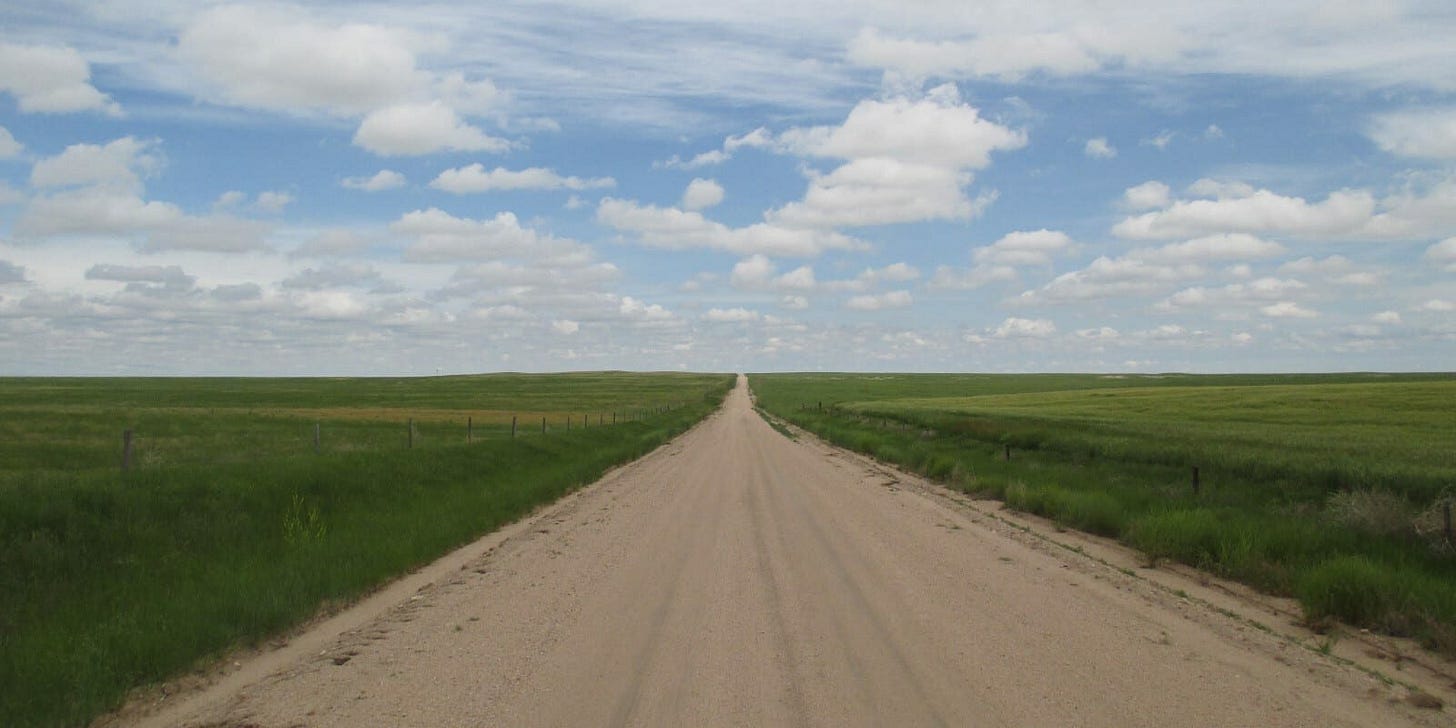
I do encourage the subscriber to the paid side if they haven't. Five bucks a month is more than worth it for Jim's fine work, even if you're poor folk like me. Hell, a cup of coffee is gonna nudge that much and it's just a matter of time before the AMA puts it on the "Bad For Ya" list. So hit the "paid" button and have a nice cup of Ovaltine while you enjoy Jim's commentary.
I changed my subscription to paid today to say thank you and tell you how much I appreciate your essays. Your writing is deep and beautiful whether speaking of the Great Plains, your personal history or our country’s tragic self inflicted wounds. Happy to be here.